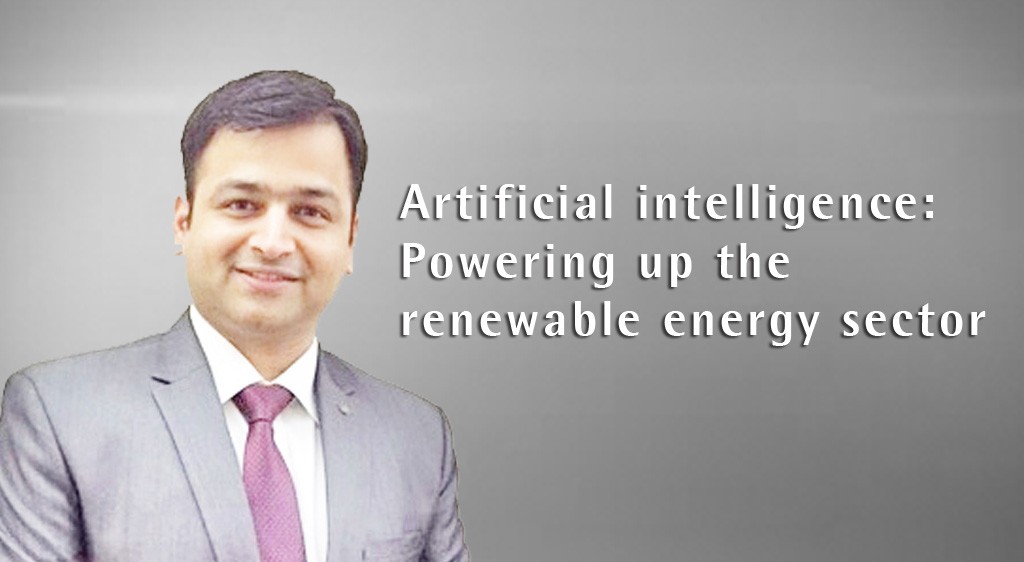Artificial intelligence: Powering up the renewable energy sector
By EPR Magazine Editorial August 10, 2018 5:49 pm IST
By EPR Magazine Editorial August 10, 2018 5:49 pm IST

When we imagine the ultimate aspiration of the renewable energy sector, it is of a 100 per cent renewables-powered grid, giving 100 per cent reliability of power supply and enabling prices to be as cheap as possible. This transition is not just an idealistic notion, but an imperative for India and the world, given the compelling economic development and environmental concerns. But even with the wealth of energy beaming and blowing down on us daily, integration of renewables remains relatively small and the transition path is beset with challenges. The current energy system is a legacy of past centuries and such is the inefficiency that the price of an electron almost doubles from the point of generation to our bills in much of the world.
Artificial intelligence (AI), particularly its machine learning (ML) aspect which is about ‘intelligence’, has exciting possibilities in any array of sectors. But those in energy are fundamental but not least because its transformation will enable many other sectors, and by extension, the country would also expand and grow in multiple sectors. These are still early days for the adoption of AI, but the applications in renewable energy are probably the most significant. There is a determined and impassioned push by the government to transition us to a renewable-powered nation, in no small part to both reduce our national energy import bill and increase energy independence. This will also aid the ‘Make in India’ campaign, and renewables will ultimately enable the cheapest power possible. The Indian energy sector is poised for things to happen at huge scale and AI can help dramatically leapfrog other countries.
As the number of solar plants and wind farms increases, there will be greater need for asset-level management. From inverters down to individual panels, AI is enabling self-management in exciting ways. Based on panel-level data, AI-bots can determine in advance an impending inverter failure or when a panel needs changing or even when it has just gotten dusty and needs a clean. They can then trigger drones to deploy and fly off to perform the repair, replenishment, or mop-up job of removing reliance on inefficient manual intervention. The whole aim of asset management bots is to keep the plant operating at its highest efficiency, which in turn optimises the ROI for the asset owners. At scale, this will ultimately make the entire national energy system more efficient, enabling enhancement of both operations and business models.
At this point, it’s worth noting that in principle, India has ample power with approximately 300GW of installed capacity of power and only 150GW of peak demand. However, this is not a practical reality, but rather, a roughened reminder of how challenging current supply and demand management is. This is despite vast swathes of the population still having only limited access, in terms of both connectivity and availability which skews our per capita consumption. Generation and consumption are essentially geographically fixed; we at least know where they occur, even if not quite what volumes and when. But we have less idea of what this will look like in the future as distributed energy.
Though abundant, solar and wind are inherently variable and will intensify grid-volatility as integration increases. Today, even with a small penetration of renewable generation, the resultant intermittency has caused significant rise in balancing costs. This further, if combined with national plans to rapidly connect over 36 million more households, could become huge. Alongside large-scale renewable generation, there are also increasing renewables-based distributed-energy deployments. The two must go hand in hand and in some localised instances this will take pressure off the central grid by reducing the load on transmission infrastructure. However, overall it will further increase the grid-volatility. The resultant data that must be processed is growing exponentially, for example frequency, supply, demand, pricing, all changing on a second-by-second basis; it is impossible for humans to handle all this complexity.
Authored by:Sanand Sule
Co-founder & CTO
Climate Connect Technologies
We use cookies to personalize your experience. By continuing to visit this website you agree to our Terms & Conditions, Privacy Policy and Cookie Policy.